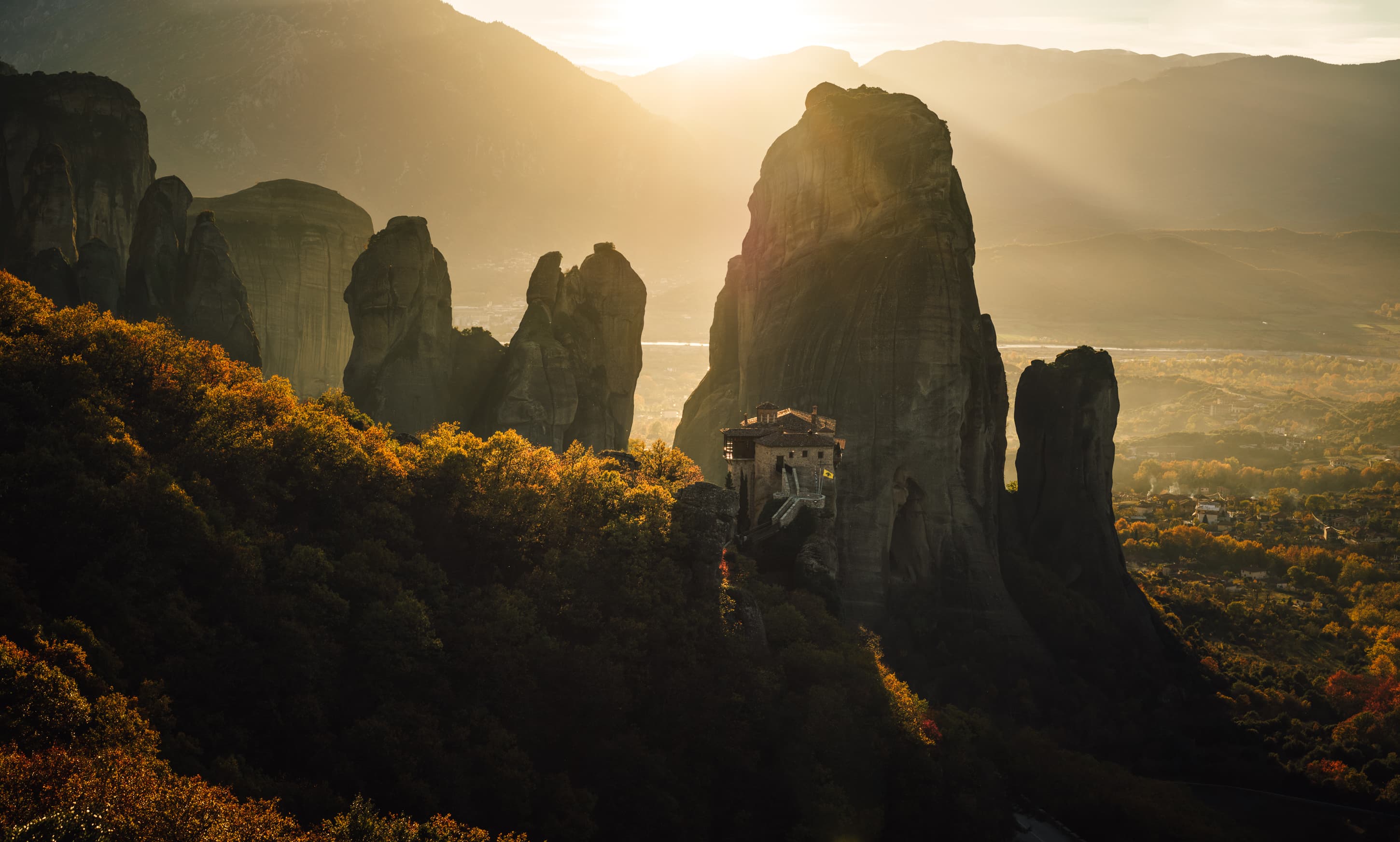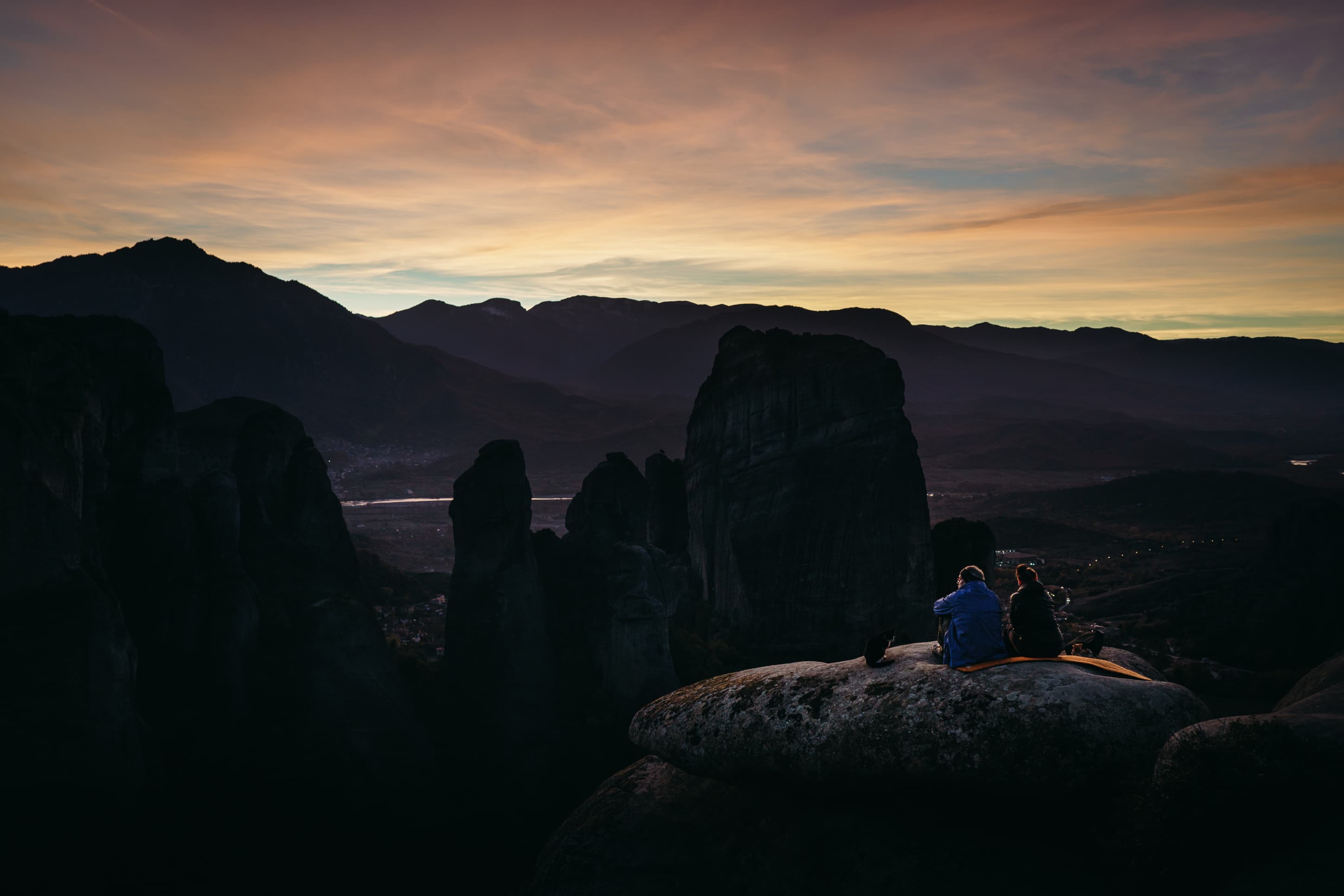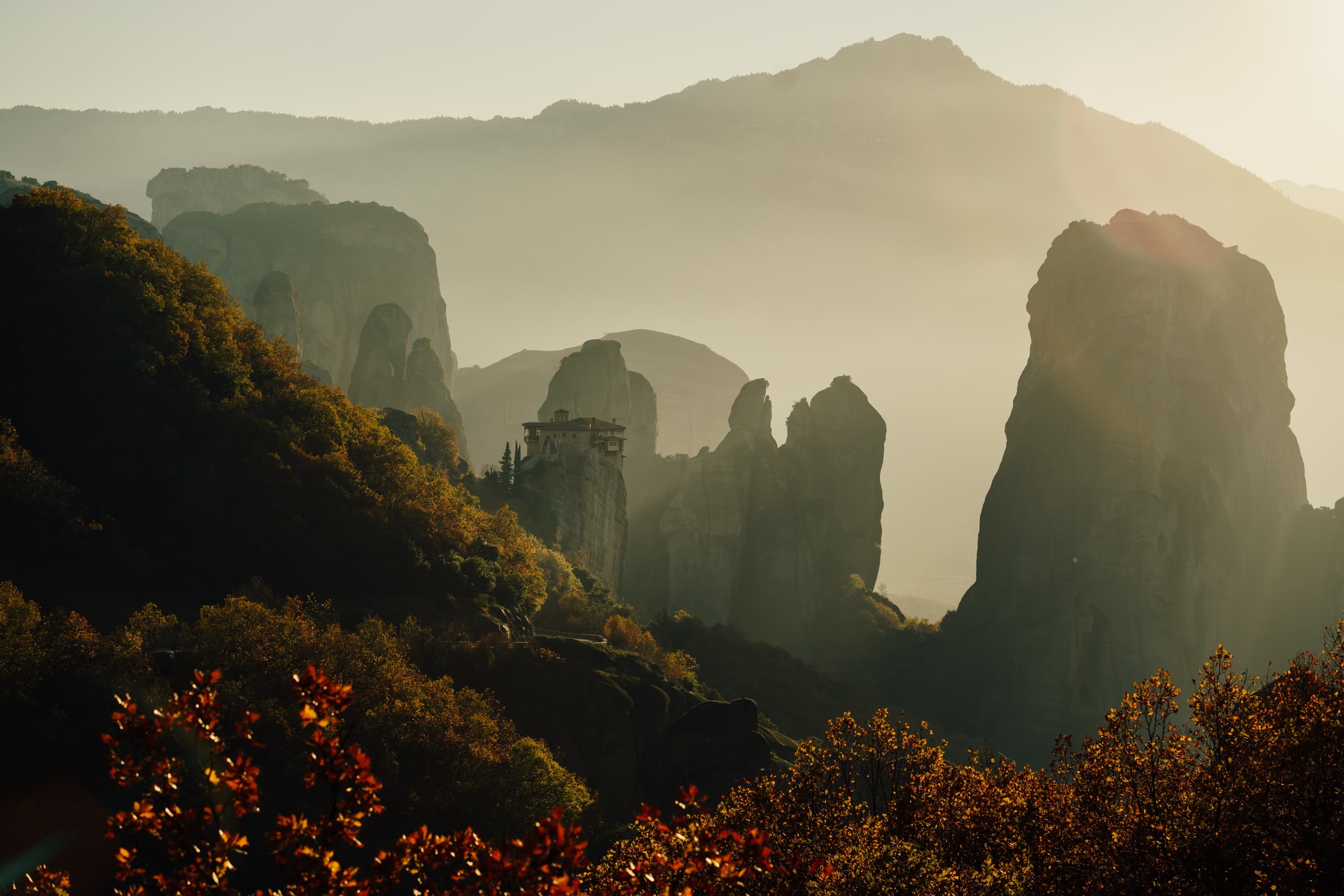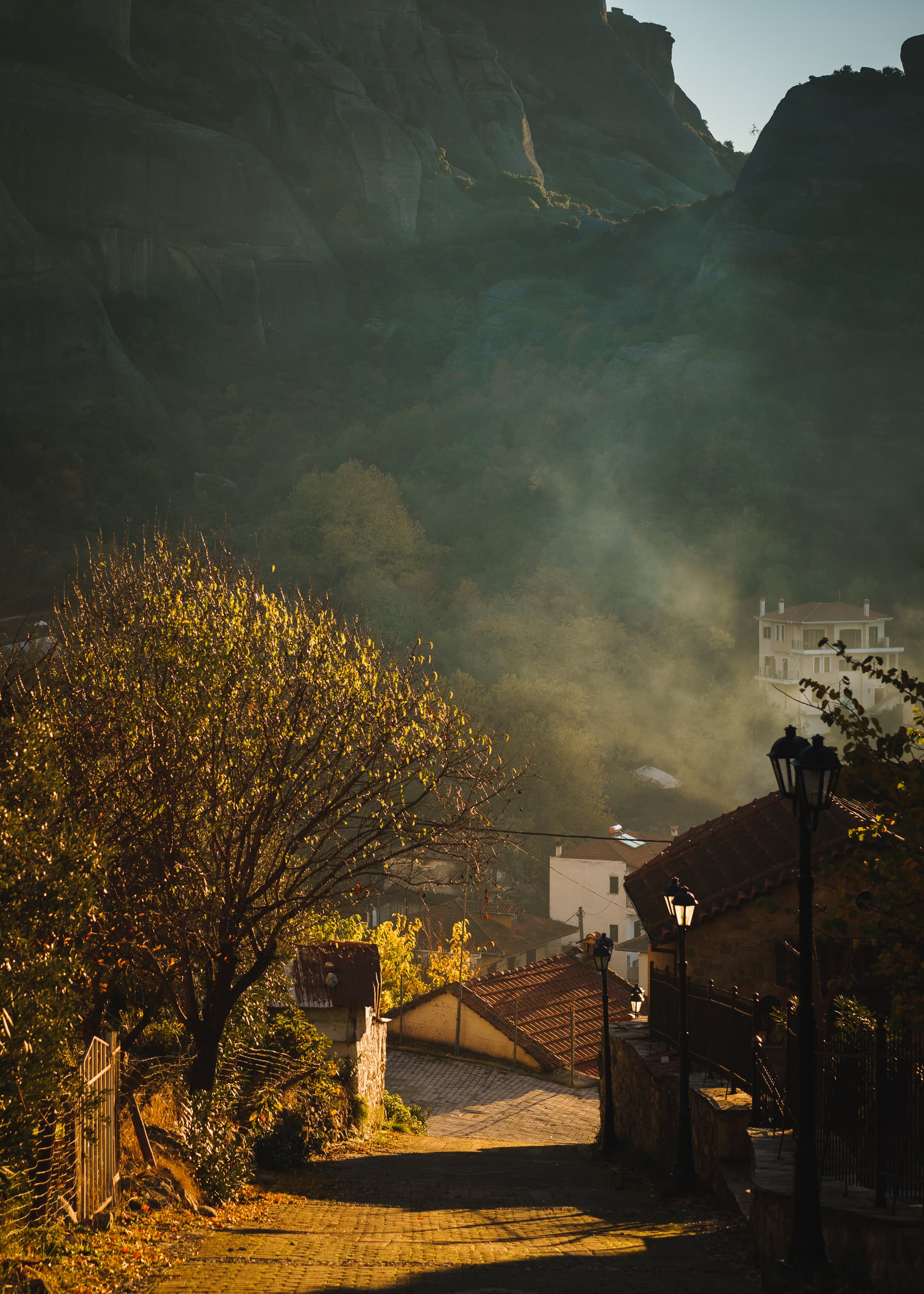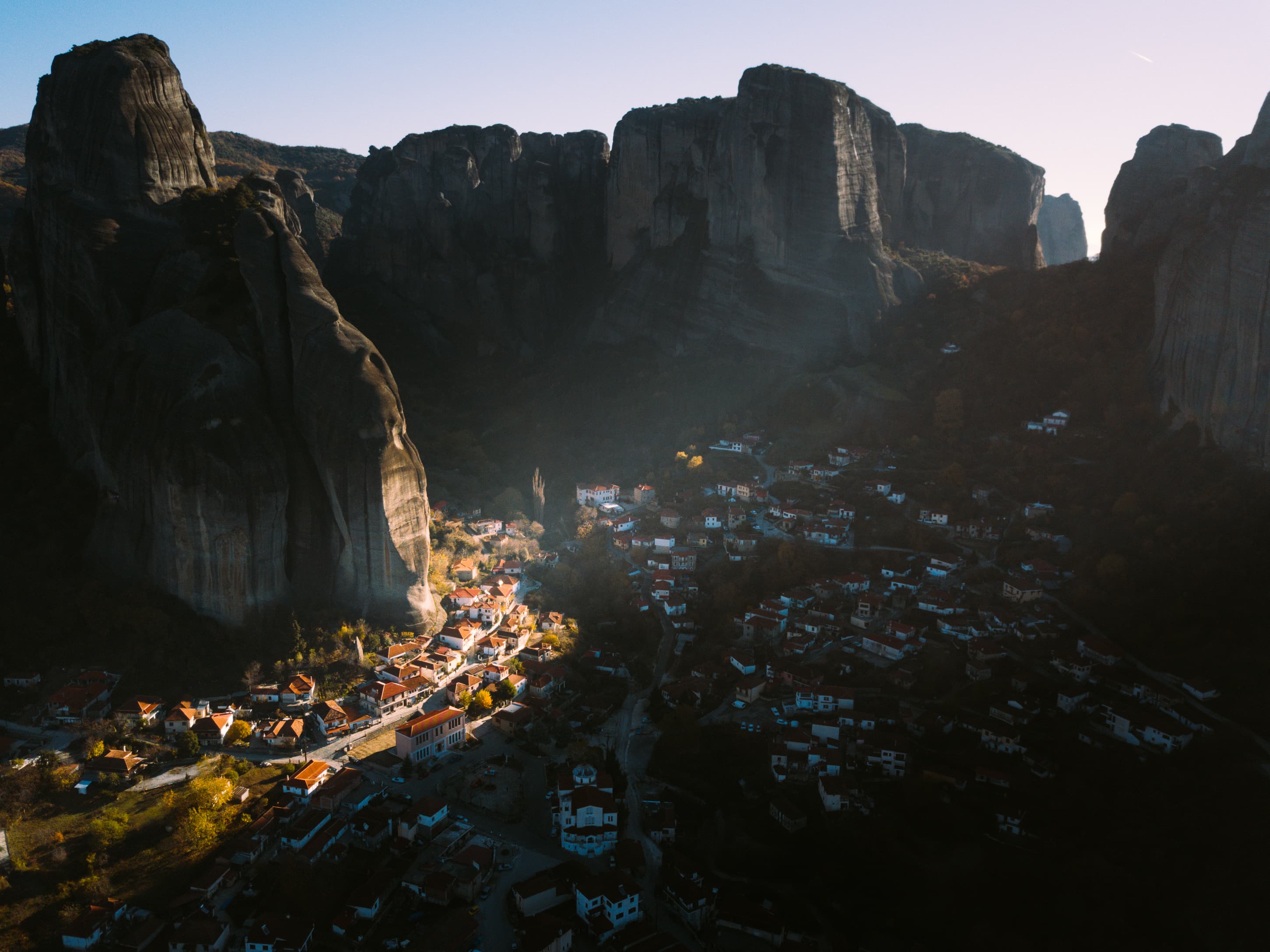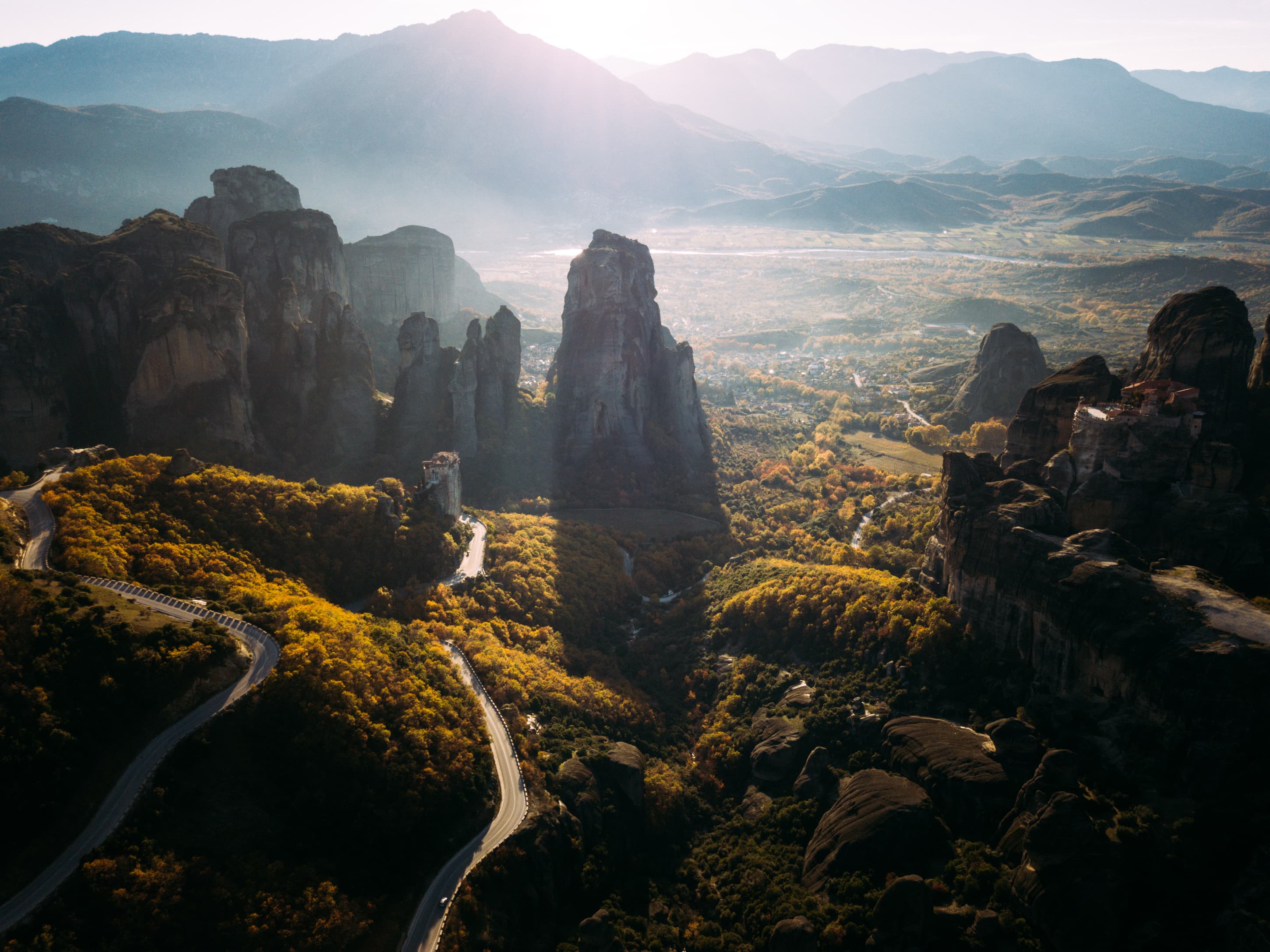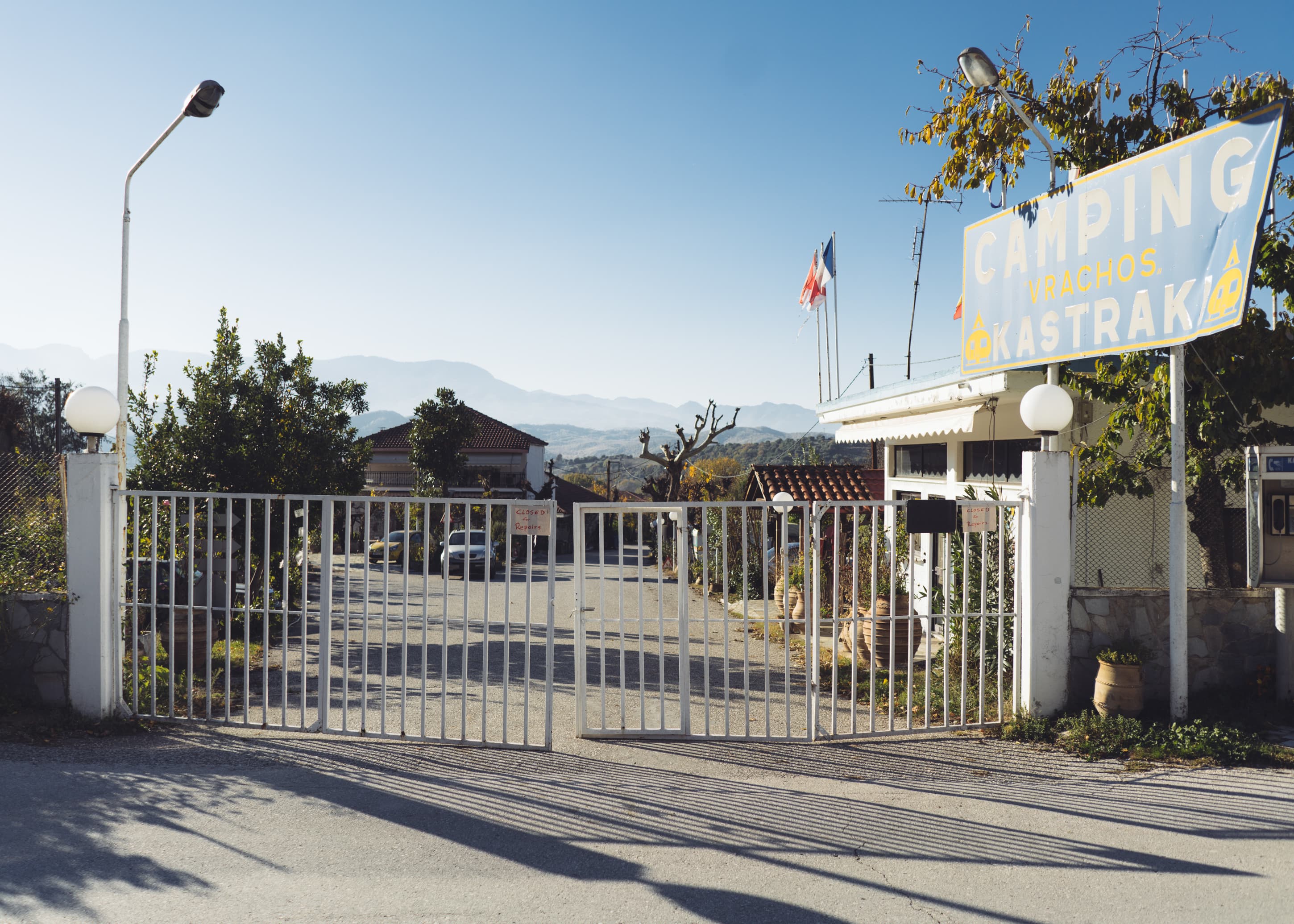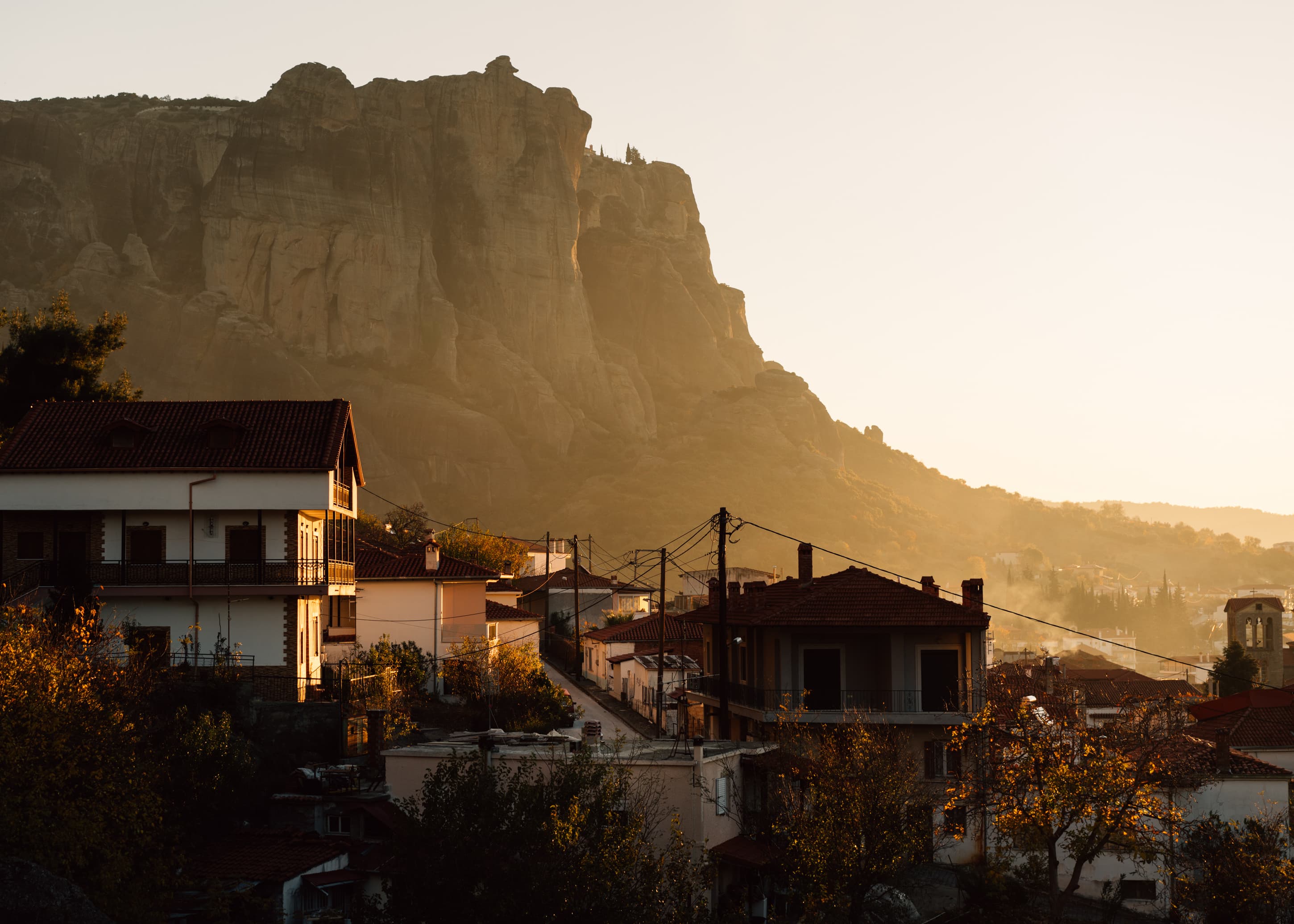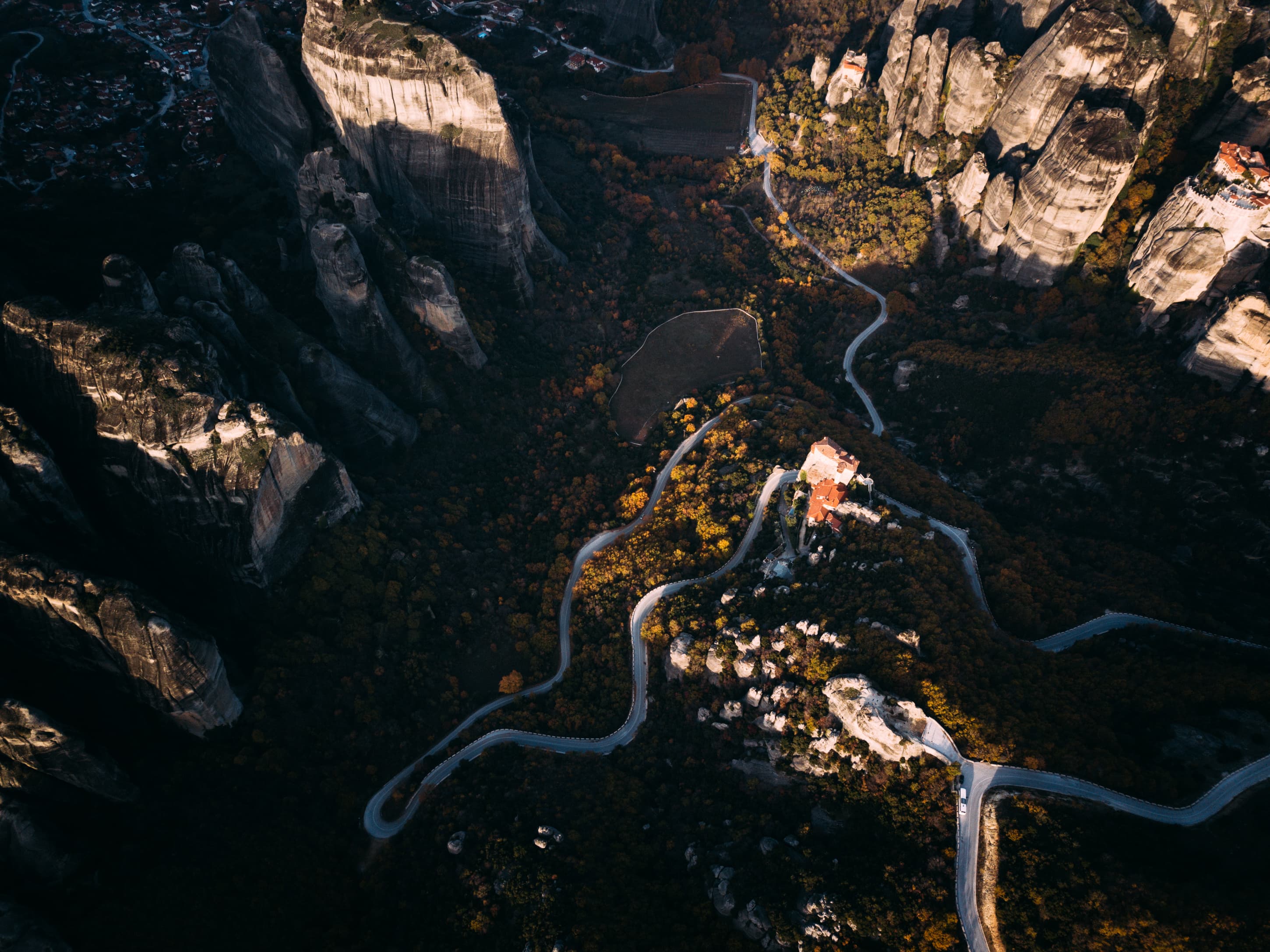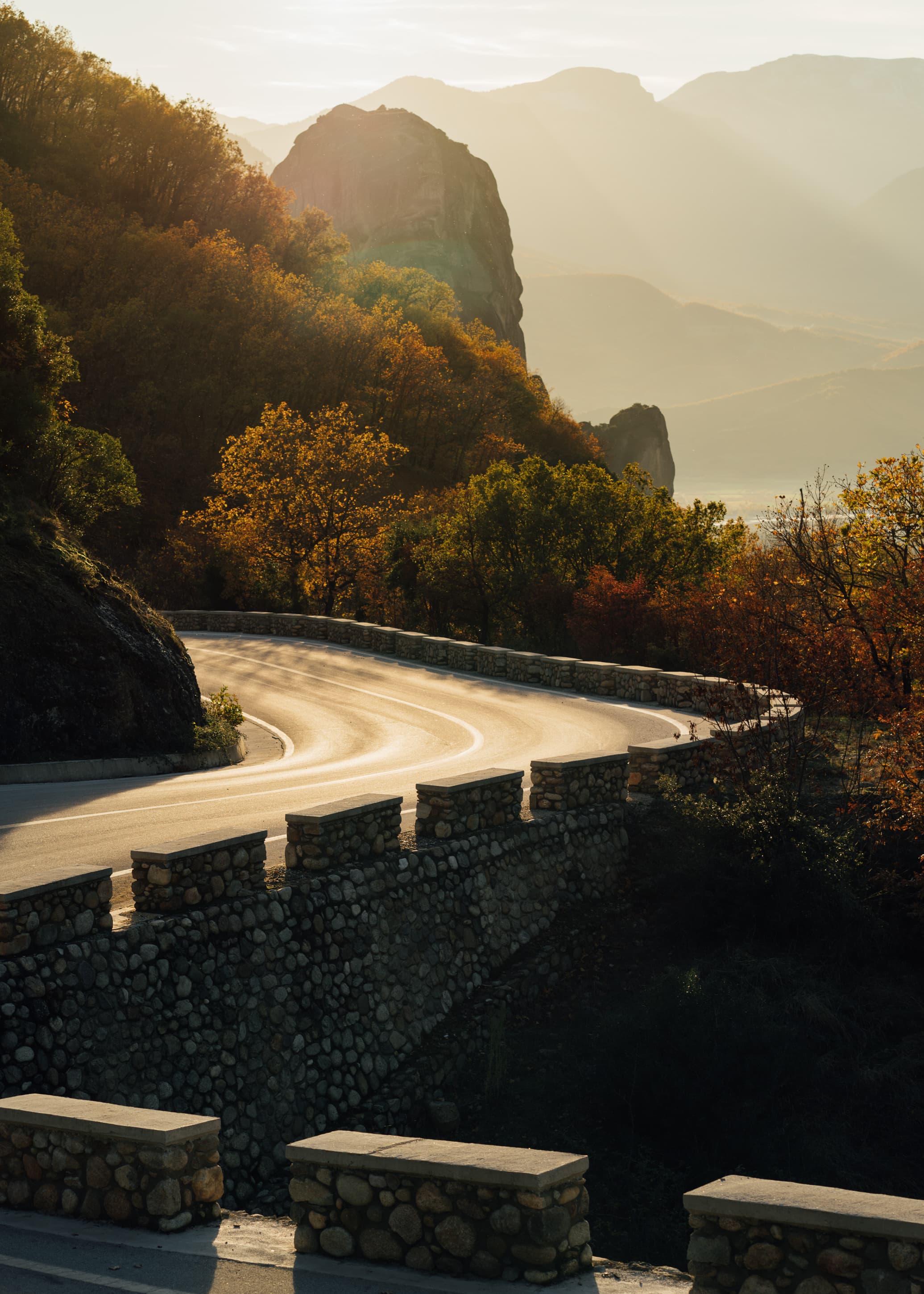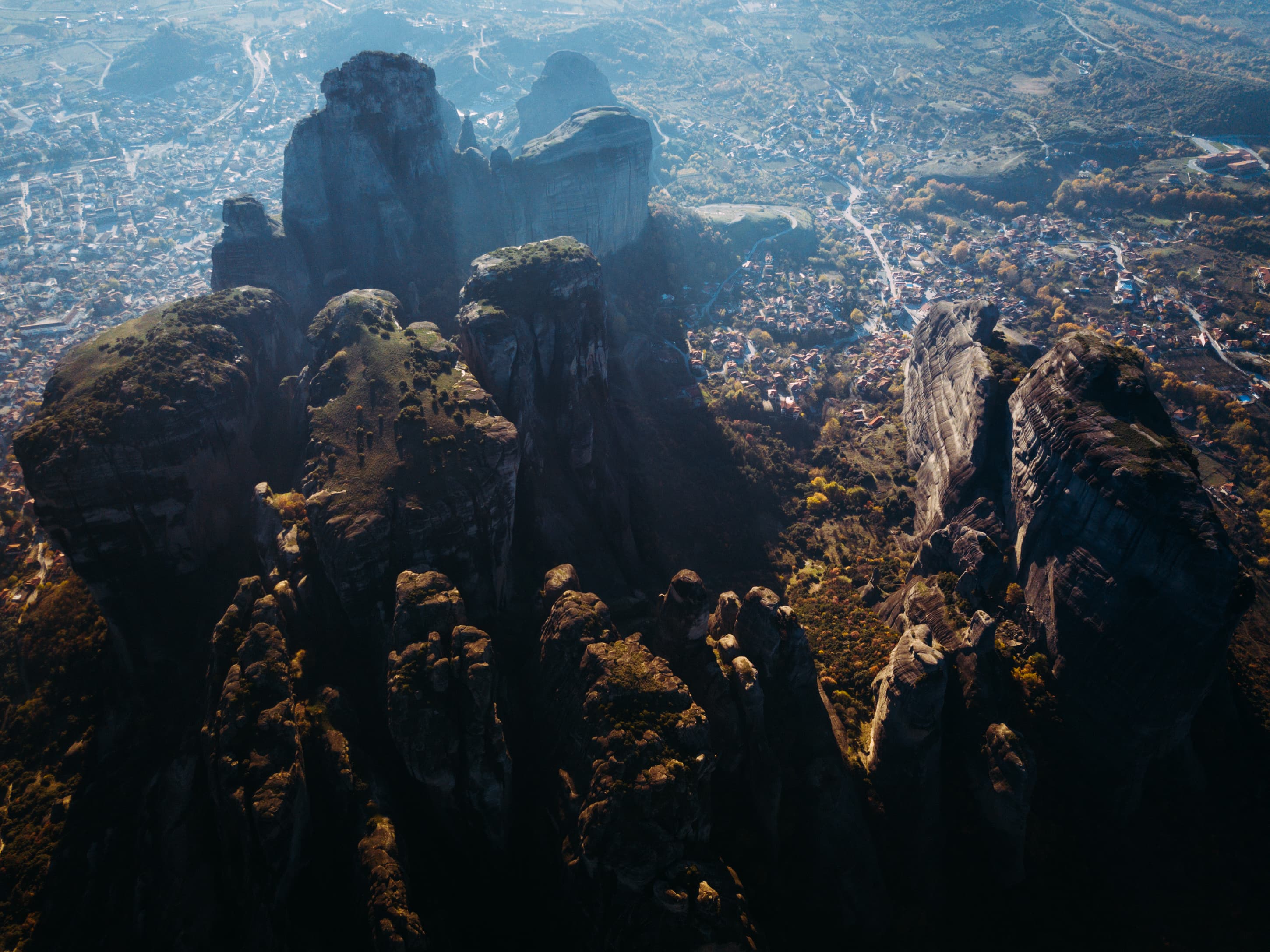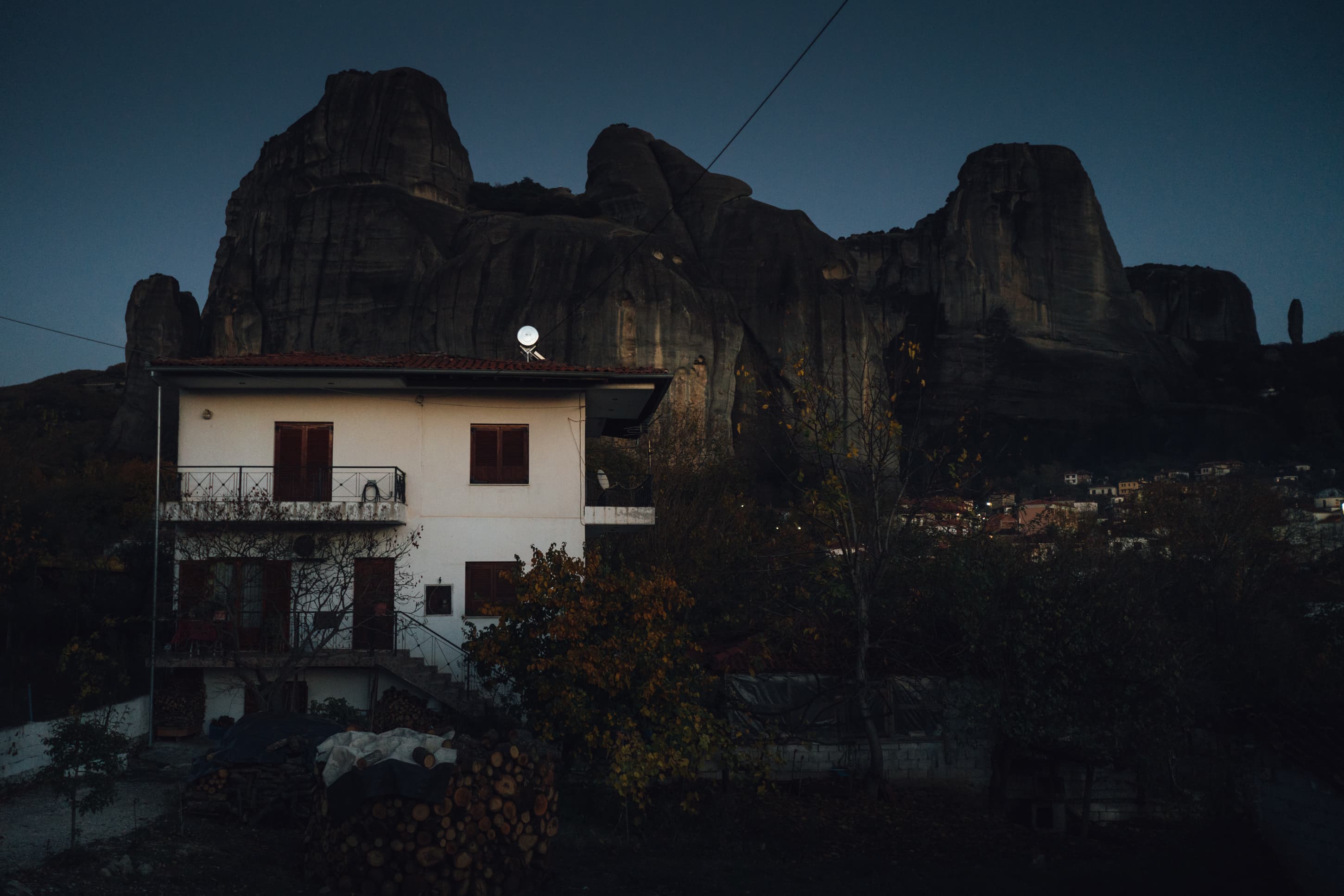The Meteora (/ˌmɛtiˈɔːrə/; Greek: Μετέωρα, pronounced [meˈteora]) is a rock formation in central Greece hosting one of the largest and most precipitously built complexes of Eastern Orthodox monasteries, second in importance only to Mount Athos. The six (of an original twenty four) monasteries are built on immense natural pillars and hill-like rounded boulders that dominate the local area. It is located near the town of Kalambaka at the northwestern edge of the Plain of Thessaly near the Pineios river and Pindus Mountains.
After about 2 weeks in Athens I needed to get out of the city, an easy “top 10 things to do” in Greece search later and I was about to hop on a 8 hour train ride to Kalabaka for my first little excursion, aiming to visit the monasteries around the mountain range just outside the city, called Meteora. I visited in off-season, so the village, campgrounds and most hotels were quite deserted, leaving the beautiful, happy little village mostly to myself. Most people who stayed did repairs on their properties or holiday homes, living quite successfully off of the tourism during the summer months. A strong scent of burnt wood and it’s fog lay in the air all over the village (it was winter up in the mountains, most of the people were heating their homes by oven) which gave it a very homey atmosphere. In general the vibe was very positive, most of the people around were locals, friendly, happy people. Due to the time of the year no visitors were there, it seemed as if the place and time stood still. All kinds of weathers were had, from sunny to rainstorms and maybe even some snowfall, it was about to be winter.
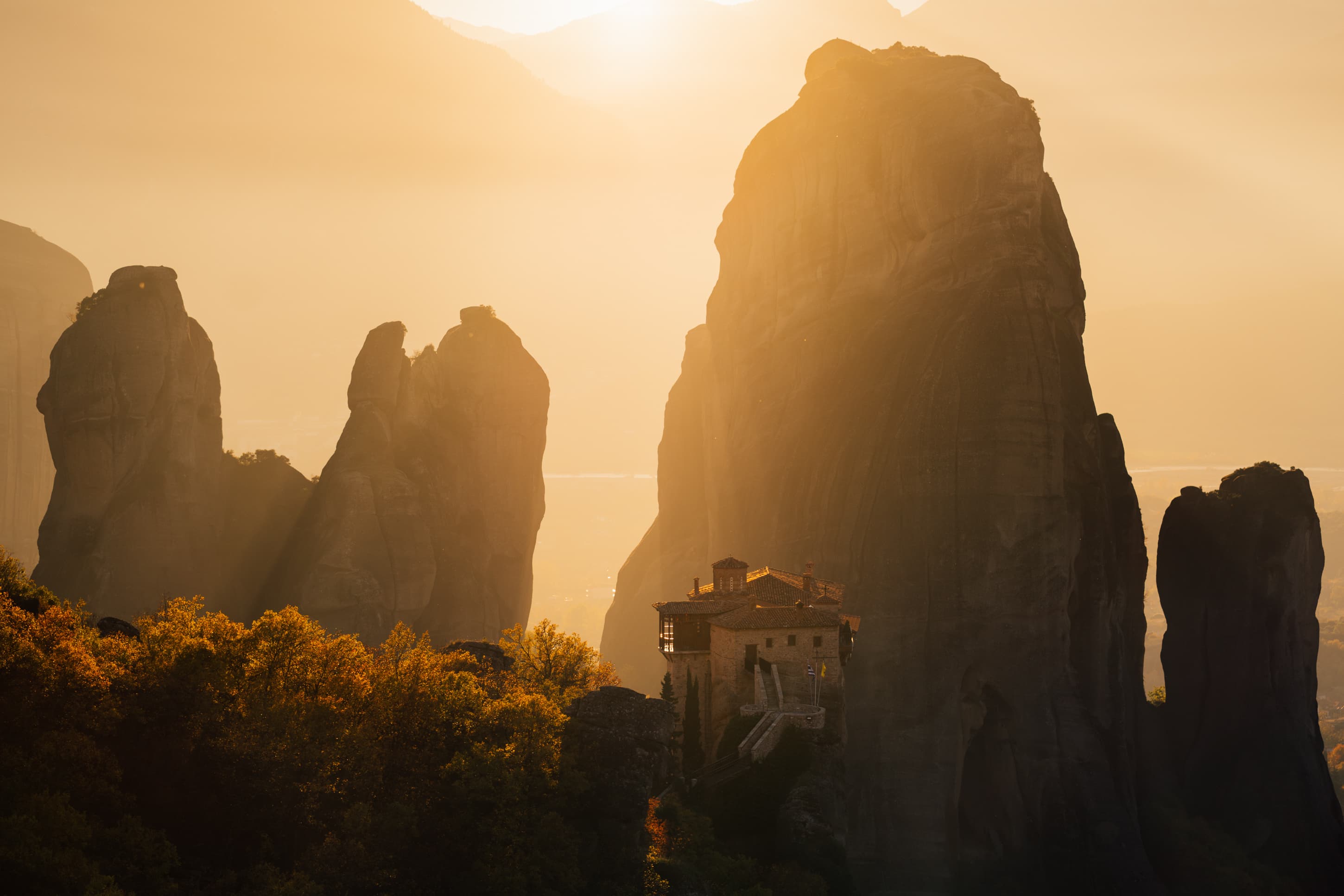
Monastery, November 2017, Meteora, Greece
The place itself was quite small (walkable within 3-6 hours from the village) so there weren’t that many things to shoot, the main thing being the 6 active Monasteries on the sides of the rocks.
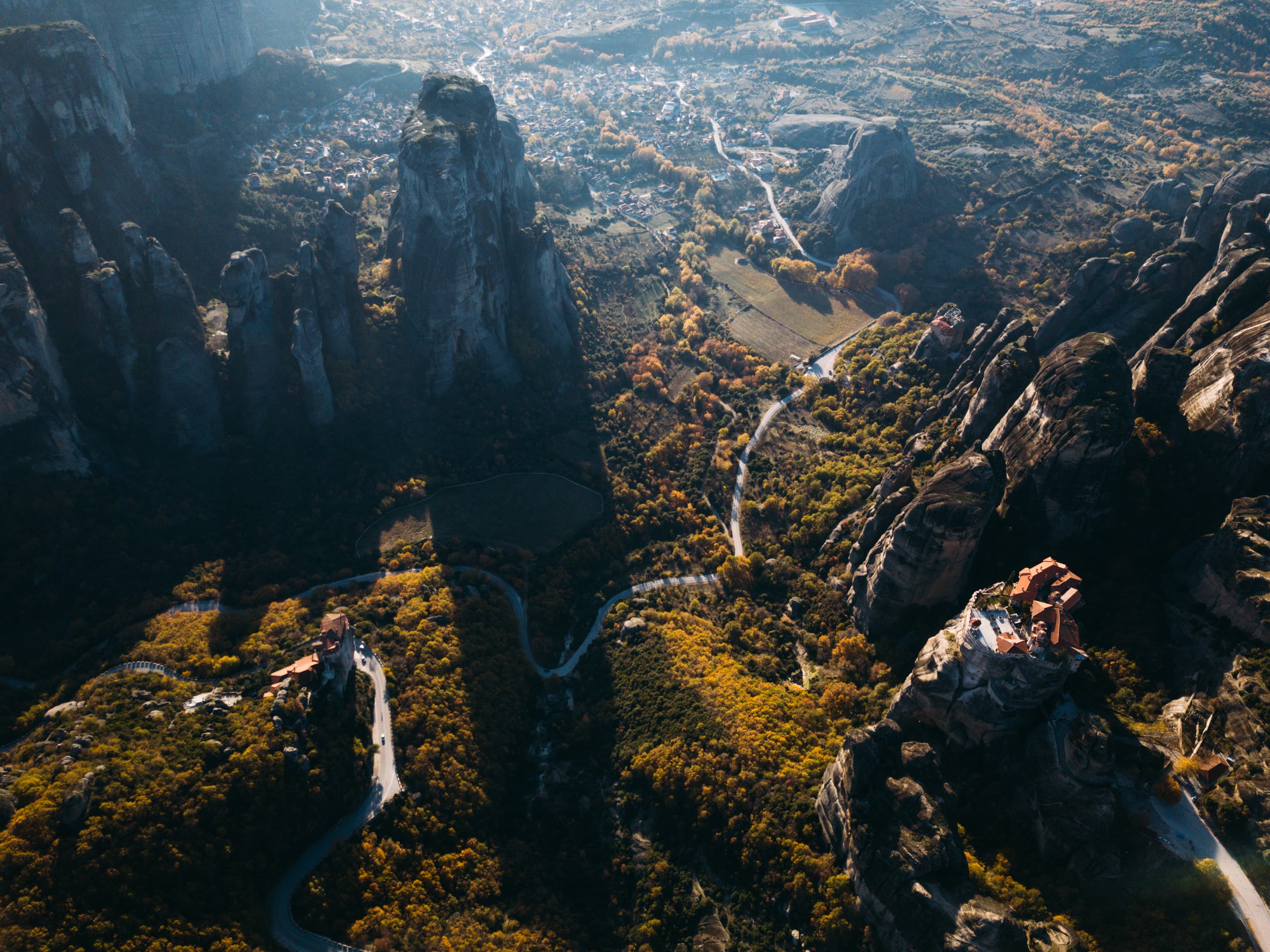
“Beside the Pindos Mountains, in the western region of Thessaly, these unique and enormous columns of rock rise precipitously from the ground.
But their unusual form is not easy to explain geologically. They are not volcanic plugs of hard igneous rock typical elsewhere, but the rocks are composed of a mixture of sandstone and conglomerate.
The conglomerate was formed of deposits of stone, sand and mud from streams flowing into a delta at the edge of a lake, over millions of years. About 60 million years ago during the Paleogene period a series of earth movements pushed the seabed upwards, creating a high plateau and causing many vertical fault lines in the thick layer of sandstone. The huge rock pillars were then formed by weathering by water, wind and extremes of temperature on the vertical faults. It is unusual that this conglomerate formation and type of weathering are confined to a relatively localised area within the surrounding mountain formation.
This type of rock formation and weathering process has happened in many other places locally and throughout the world, but what makes Meteora’s appearance special is firstly the uniformity of the sedimentary rock constituents deposited over millions of years leaving few signs of vertical layering, and secondly the localised abrupt vertical weathering.”
The more you know. Wikipedia.
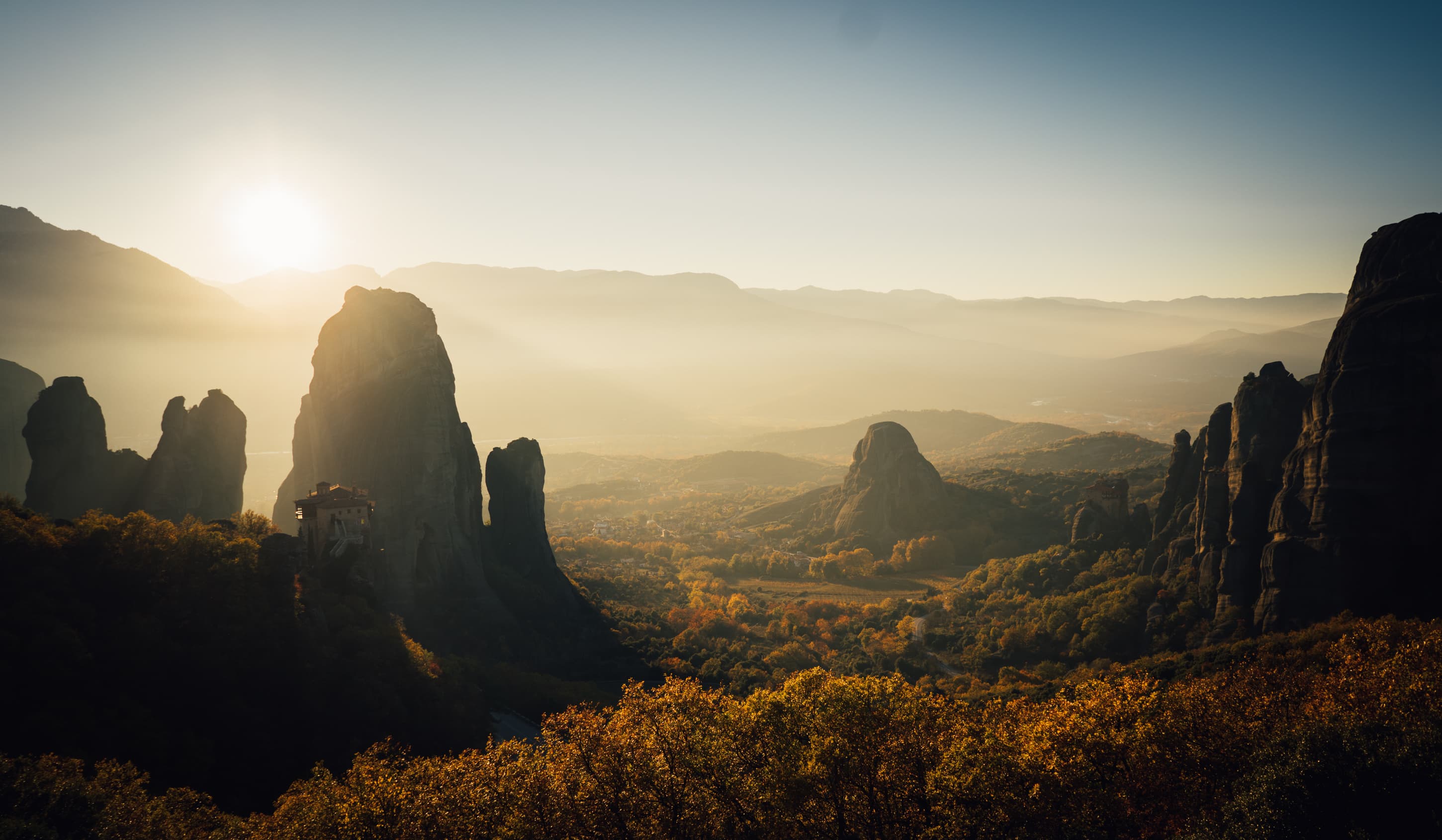
This is the place to hike a lot, as it was possible to hike up from the village and visit all the good spots within 3-6 hours from starting the walk, even walking across the range and taking one of the ways down on the right side ending up in the neighboring town of Kalabaka (I stayed in Kastraki) could easily be done in a day.
Once up on the plateau the hike is quite flat and it is easy to get around to all the monasteries. Very impressive and unique formations of rock with monasteries on the sides of some of them, easily accessible. They were still in use as well, nuns and monks minding their daily lifes, which must be quite contrasty compared to the average tourists’ life, still living a few centuries ago. They have electricity, but I think most of the tasks from a few centuries ago still exist in those places today. It must have been so much work to get all the necessities up there from the village before the road was build. A few tourist buses connecting the hotspots, but even up here at this time of the year more cats than people could be found.

